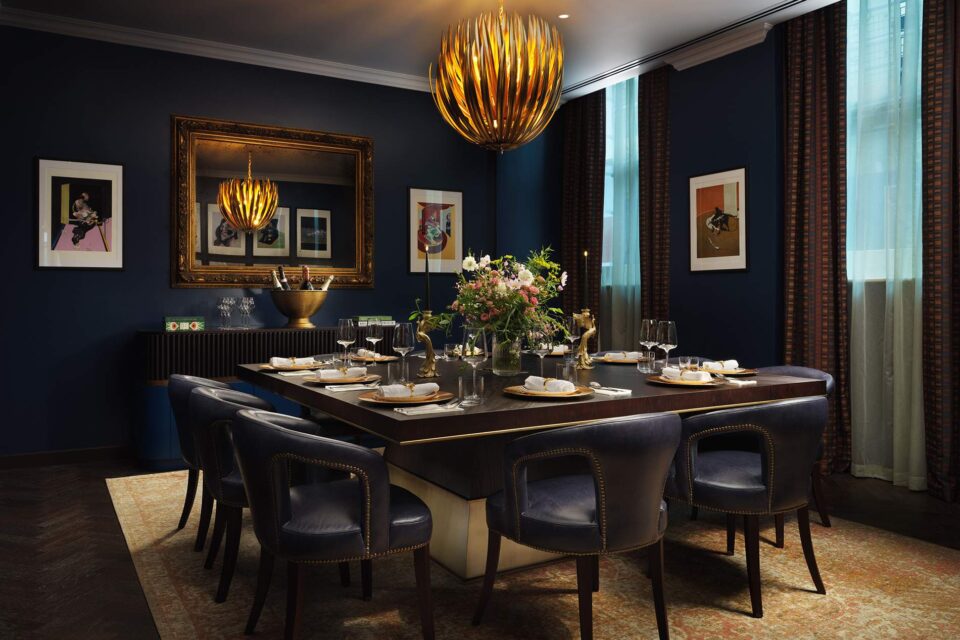Do you love your dining room, or are you just thinking about doing some mini & mild renovations? Whether it is a separate room or part of an open floor plan, the eating area should be functional, appealing, and cozy for its users. You want to feel cozy & welcome when having a meal with your friends and family. Aim for a classy, homey & warm atmosphere, as finding your style is the key in this case. If you are ready to do some touch-ups, keep on reading and discover your options below.
5 Dining Room Interior Design Tips for a Stylish and Comfortable Space
1. Find the perfect table
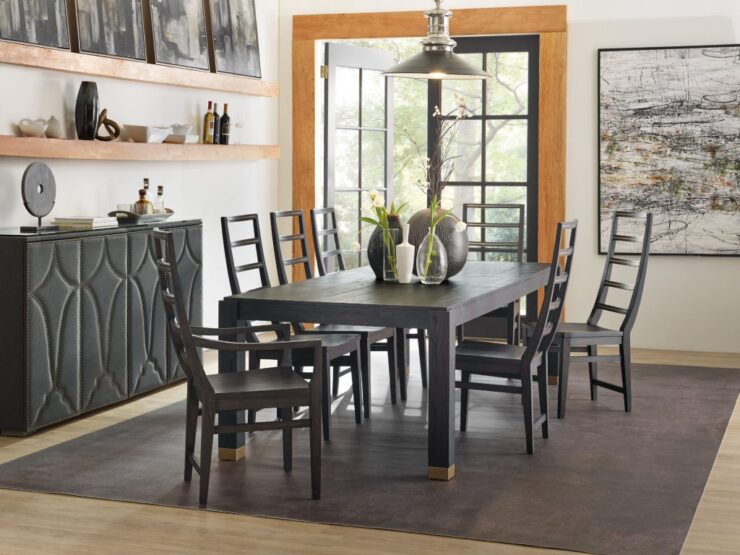
Having a wishlist and a plan for where you want to place the furniture in your new dining room helps simplify the process significantly.
When making plans, considering the space’s layout and the movement of people will provide better results.
Remember that a dining area without a dining table is simply another room, so aim for the best & sturdiest table there is. If you are looking for some gorgeous kinds, check out booth dining table, and find here what you’ve been missing! They are super shiny, high-quality & durable, as well as perfect for any family. So, will you only use it for dining and entertainment, or will other activities, such as work or play, also take place there? You will decide the proportions and shapes of the table and other furnishings. Just have a vision when making your kitchen.
2. The right lighting
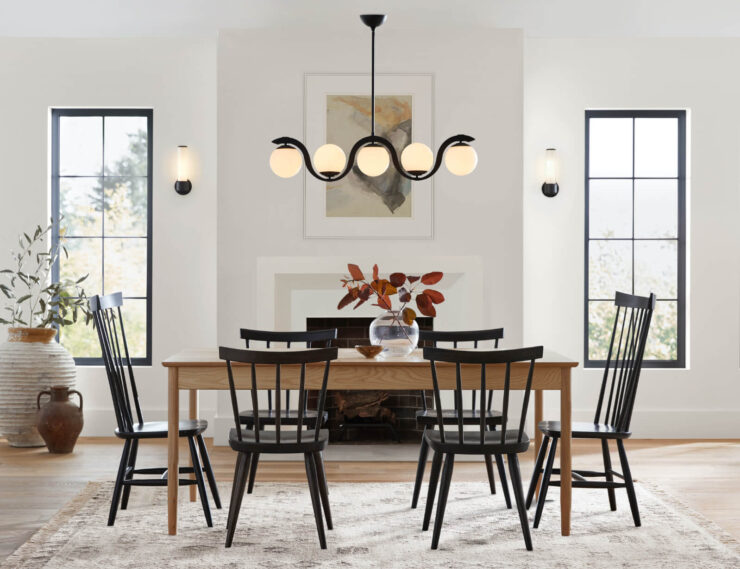
It may be more convenient to keep the floors you were given, but new flooring for the dining room is essential for its functionality.
The floor in a dining room needs to be strong and attractive because it gets a lot of use and is frequently stained.
According to David Snazel of Carpetright, the three most important considerations when selecting flooring for your dining room are aesthetics, durability, and maintenance. Because of the high volume of traffic that passes over it, the flooring in your dining room should be of the highest possible quality and longevity. When hosting guests, it’s important to use an easy-to-clean material in case any food or drink spills or splashes. Darker designs and colors tend to be more forgiving of typical scuffs and scratches. It’s common to find hard flooring in homes that accommodate plenty of guests. Engineered wood is a high-end material that is both sturdy and aesthetically pleasing.
If you want to make the floor more interesting to touch, layer rugs of different colors and patterns on top of one another.
3. A theme
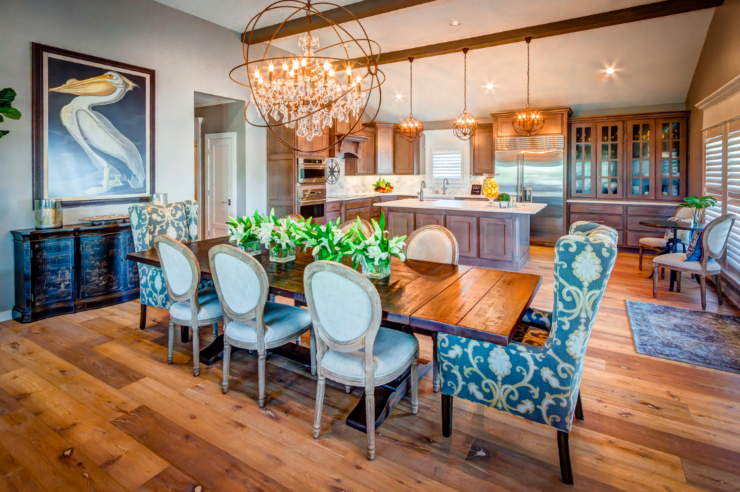
That’s something you should have nailed down before starting any kind of home improvement project, theme or not.
You have the freedom to pick the design that best reflects who you are, or you may be creative by combining elements from different styles.
Some suggestions for the redesign of your dining area:
- Farmhouse dining rooms benefit from wide, hardwood furniture with claw feet and neutral colors. The best examples of modern farmhouse dining rooms have a combination of rustic elements like wooden tables and chairs with more urban touches like clean lines and subdued hues.
- White walls, accent walls, and inspiring artwork in this modern dining room. The furniture has clean lines and a simple, elegant appearance while still being highly useful.
- The chi flow in a minimalist dining room is usually calm and uncluttered.
- A dining room decorated in the traditional style includes a table, chairs, china cabinets, and, preferably, a chandelier.
- A compact dining area that can also serve as a home office, study, reading nook, etc., thanks to being attached to a wall.
- A formal dining room, spacious enough to accommodate both everyday meals and entertaining, mixes the spectacular with the essential. It’s always in top shape and ready to entertain. Includes chandeliers, table centerpieces, magnificent wall art, and more to complement the room’s size and style.
4. Play with color
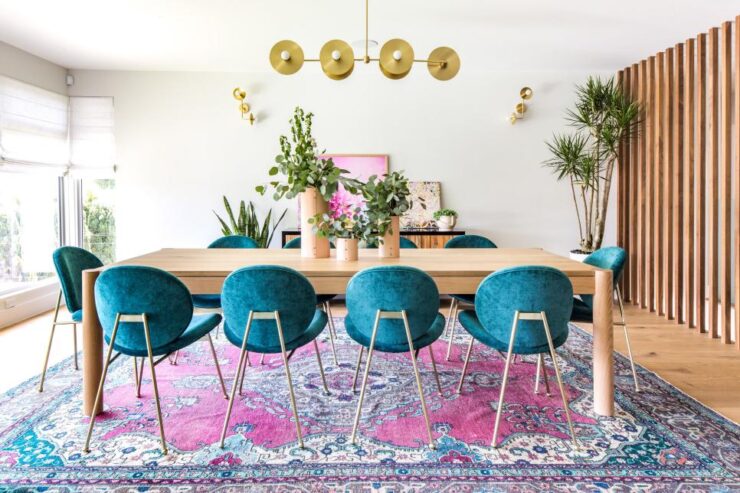
The colors you choose for your tablecloths, dinnerware, and other accessories have a big impact on the atmosphere in your dining area, but also on your overall home.
Stay with neutral colors like beige, brown, white, ivory, or gray for a timeless appearance. Would you like to experiment?
Try accessorizing with a single piece in a striking, non-neutral shade if you want to liven things up. If you love bright, colorful & chic rooms, use bold colors and a variety of materials.
Use opposing fabrics, such as shiny velvet and earthy linen, to contrast features, and then add a printed tablecloth or rug to carry the color scheme throughout the room.
Contrary to popular belief, the choice of color and furniture for a room can have a considerably bigger impact.
It’s a sizable area, and now is your time to personalize the dining room so that it feels like your own.
Choose a piece of art for the wall that truly moves you as the first step.
Maybe it completes the room’s color palette or acts as a visual memory of your travels.
5. A gorgeous rug
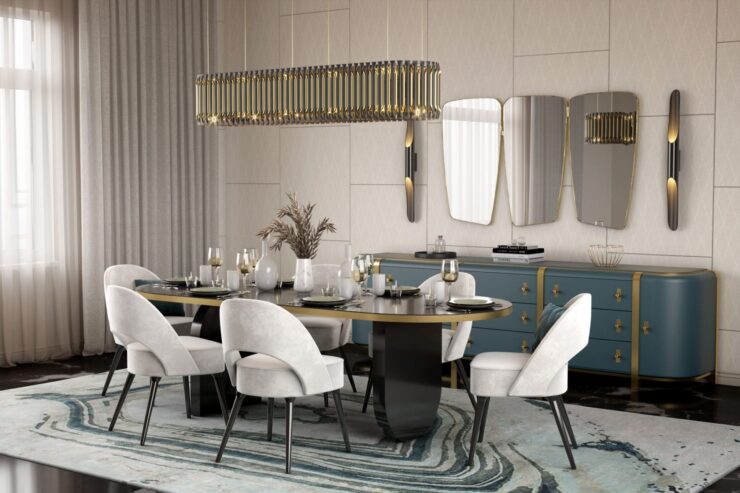
Rugs are a great way to anchor a dining table and add visual interest with their pattern, texture, and color.
It is crucial to select a dining table size that allows you to comfortably seat everyone at the table while yet showing some floor.
Experts recommend leaving at least 36 inches of floor space between the dining room table’s edge and the rug’s perimeter.
The standard dining room table requires a rug that is at least 8 feet in width. You won’t have to worry about the carpet getting in the way as you pull out the chairs. You should also think about fabrics.
Since the dining area is used for eating and drinking, messes and stains are to be expected. Use a long-lasting fabric, like jute. Make sure that you don’t go for light carpets if you have kids or pets, as this can truly get messy.

